Jaguar E-Pace vs Lexus ES – Differences & prices compared
Compare performance, boot space, consumption and price in one view.
Find out now: which car is the better choice for you – Jaguar E-Pace or Lexus ES?
The Jaguar E-Pace (SUV) comes with a Plugin Hybrid, Diesel MHEV or Petrol MHEV engine and Automatic transmission. In comparison, the Lexus ES (Sedan) features a Full Hybrid engine with Automatic transmission.
When it comes to boot capacity, the Jaguar E-Pace offers 494 L, while the Lexus ES provides 454 L – depending on how much space you need. If you’re looking for more power, decide whether the 269 HP of the Jaguar E-Pace or the 218 HP of the Lexus ES suits your needs better.
In terms of consumption, the values are 1.40 L per 100 km for the Jaguar E-Pace, and 5.10 L for the Lexus ES.
Price-wise, the Jaguar E-Pace starts at 32400 £, while the Lexus ES is available from 46600 £. Compare all the details and find out which model fits your lifestyle best!
Jaguar E-Pace
The Jaguar E-Pace is a compact SUV that combines the brand's signature luxury with a dynamic driving experience. Its sleek design features graceful lines and an assertive stance, making it a standout on any road. Inside, the E-Pace boasts a meticulously crafted interior with high-quality materials and advanced technology, providing both comfort and connectivity for drivers and passengers alike.
details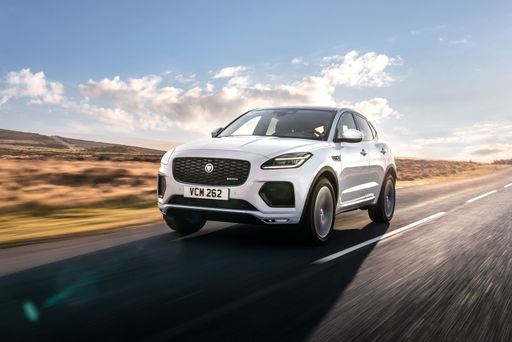 @ media.jaguar.com
@ media.jaguar.com
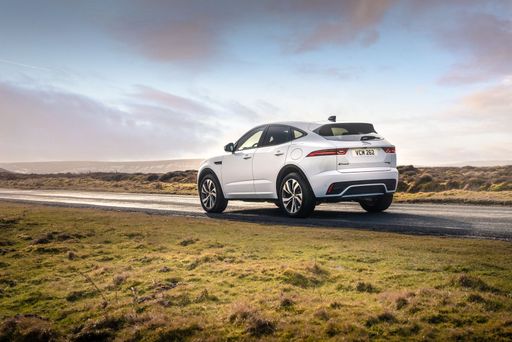 @ media.jaguar.com
@ media.jaguar.com
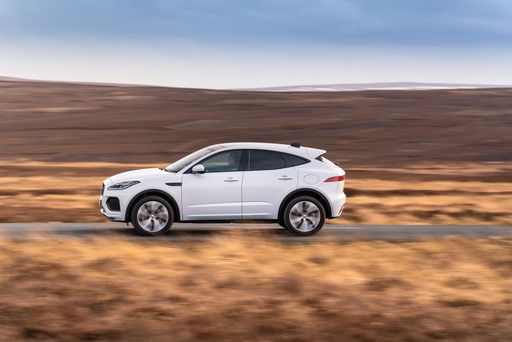 @ media.jaguar.com
@ media.jaguar.com
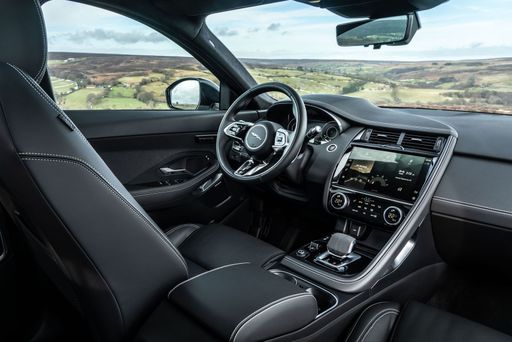 @ media.jaguar.com
@ media.jaguar.com
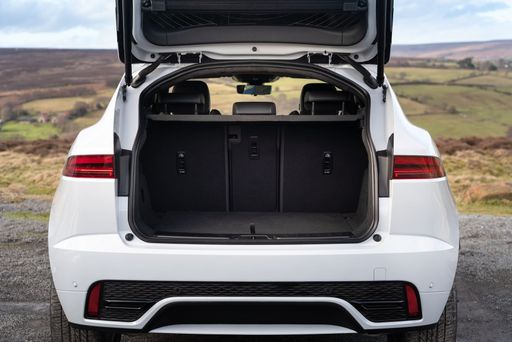 @ media.jaguar.com
@ media.jaguar.com
Lexus ES
The Lexus ES represents a blend of luxury and comfort, offering a smooth driving experience that is characteristic of the brand. With its elegant design and meticulously crafted interior, it provides a serene environment for both driver and passengers. The inclusion of advanced safety features and cutting-edge technology enhances its appeal, ensuring that every journey is not only enjoyable but also secure.
details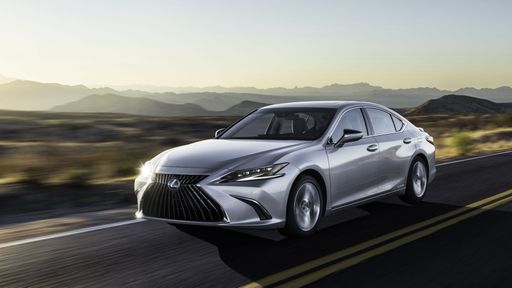 @ toyota-media.de
@ toyota-media.de
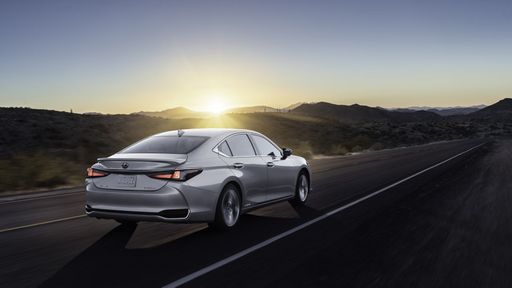 @ toyota-media.de
@ toyota-media.de
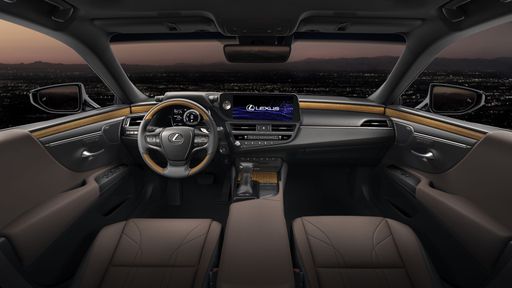 @ toyota-media.de
@ toyota-media.de

|

|
|
|
|
Costs and Consumption |
|
|---|---|
|
Price
32400 - 56100 £
|
Price
46600 - 59300 £
|
|
Consumption L/100km
1.4 - 8.2 L
|
Consumption L/100km
5.10 L
|
|
Consumption kWh/100km
-
|
Consumption kWh/100km
-
|
|
Electric Range
69 km
|
Electric Range
-
|
|
Battery Capacity
11.50 kWh
|
Battery Capacity
-
|
|
co2
33 - 185 g/km
|
co2
115 g/km
|
|
Fuel tank capacity
56 - 67 L
|
Fuel tank capacity
50 L
|
Dimensions and Body |
|
|---|---|
|
Body Type
SUV
|
Body Type
Sedan
|
|
Seats
5
|
Seats
5
|
|
Doors
5
|
Doors
4
|
|
Curb weight
1783 - 2173 kg
|
Curb weight
1680 kg
|
|
Trunk capacity
494 L
|
Trunk capacity
454 L
|
|
Length
4395 mm
|
Length
4975 mm
|
|
Width
1984 mm
|
Width
1865 mm
|
|
Height
1648 mm
|
Height
1445 mm
|
|
Payload
497 - 554 kg
|
Payload
470 kg
|
Engine and Performance |
|
|---|---|
|
Engine Type
Plugin Hybrid, Diesel MHEV, Petrol MHEV
|
Engine Type
Full Hybrid
|
|
Transmission
Automatic
|
Transmission
Automatic
|
|
Transmission Detail
Automatic Gearbox
|
Transmission Detail
-
|
|
Drive Type
All-Wheel Drive, Front-Wheel Drive
|
Drive Type
Front-Wheel Drive
|
|
Power HP
160 - 269 HP
|
Power HP
218 HP
|
|
Acceleration 0-100km/h
7.3 - 10.5 s
|
Acceleration 0-100km/h
8.90 s
|
|
Max Speed
190 - 211 km/h
|
Max Speed
180 km/h
|
|
Torque
260 - 540 Nm
|
Torque
-
|
|
Number of Cylinders
3 - 4
|
Number of Cylinders
4
|
|
Power kW
118 - 198 kW
|
Power kW
160 kW
|
|
Engine capacity
1498 - 1998 cm3
|
Engine capacity
2487 cm3
|
General |
|
|---|---|
|
Model Year
2024
|
Model Year
2024
|
|
CO2 Efficiency Class
B, G
|
CO2 Efficiency Class
C
|
|
Brand
Jaguar
|
Brand
Lexus
|
Jaguar E-Pace
The Jaguar E-Pace: A Modern Marvel in Compact SUV Design
The Jaguar E-Pace stands as a testament to the evolution of compact SUVs, merging classic design elements with cutting-edge technology. For those who appreciate the Jaguar pedigree, the E-Pace offers a blend of performance, style, and practicality that is hard to rival in its class.
Performance and Powertrain Options
Under the bonnet, the Jaguar E-Pace showcases a range of powertrains that cater to various driving preferences. Potential buyers can choose from plug-in hybrids, diesel mild-hybrids, and petrol mild-hybrids, each offering a unique balance of efficiency and power. The available engine options span from 160 to 269 PS, ensuring that drivers can select a model that suits their need for speed and fuel efficiency. Across the range, the acceleration from 0-100 km/h varies between a brisk 7.3 seconds to a more leisurely 10.5 seconds, showcasing versatility in design to meet different driving styles.
Innovative Hybrid Technologies
Jaguar's commitment to sustainability is evident in the E-Pace's hybrid offerings. The P270e Plug-in Hybrid variant combines performance with eco-friendly engineering, boasting a remarkable fuel consumption of just 1.4 L/100km and an all-electric range of up to 69 km. Meanwhile, the diesel mild-hybrids provide a balanced mix of efficiency and traditional power, catering to those who favour diesel engines' long-haul credibility with carbon emissions ranging from a low 33 g/km.
Dynamic Handling and Intelligent All-Wheel Drive
Driving dynamics are at the heart of the E-Pace's design. Jaguar's Intelligent All-Wheel Drive ensures optimal performance across various terrains, enhancing both stability and agility. For those seeking a dynamic driving experience, the R-Dynamic packages add a sporty flair, elevating both aesthetic and on-road performance.
Interior Sophistication and Practicality
The interior of the E-Pace reflects Jaguar's attention to detail, offering a meticulously crafted cabin that combines luxury with functionality. Supporting up to five passengers comfortably, it provides advanced infotainment systems and high-quality materials throughout. The 494-litre boot space ensures ample room for luggage, making it a practical choice for everyday use or weekend getaways.
A Focus on Safety and Driver Assistance
Safety remains at the forefront of the E-Pace's features, with an array of driver-assistance systems designed to enhance security and ease of driving. From adaptive cruise control to lane-keeping assist, the vehicle is equipped to handle the demands of modern motoring.
Conclusion: The Ideal Compact SUV
The Jaguar E-Pace is more than just a statement of style; it's a comprehensive package that addresses the needs of the modern driver. With a price range from €37,800 to €65,500, the E-Pace strikes a balance between luxury and practicality, making it a compelling choice in the competitive compact SUV market.
Lexus ES
Explore the Alluring Elegance of the Lexus ES
The Lexus ES continues to uphold its reputation as a beacon of luxury and innovation in the automotive world. Known for its graceful design and premium feel, the ES series offers an impressive blend of performance and efficiency. With a focus on technical prowess and sustainability, this model is a testament to Lexus's commitment to excellence.
Performance and Efficiency: A Seamless Blend
At the heart of the Lexus ES is its full-hybrid technology. The 218 PS powertrain, featuring a 4-cylinder engine, harmoniously integrates a combustion engine with an electric motor to provide a remarkable drive. The ES achieves its impressive power output of 160 kW while maintaining a commendable fuel consumption of 5.1 L/100 km. This balance between power and efficiency is manifested in its acceleration from 0 to 100 km/h in just 8.9 seconds, powering seamlessly through a cost-effective CVT-gearbox with front-wheel drive. Despite its athletic capabilities, the ES remains well within the bounds of responsible emissions with a CO2 output rated at 115 g/km.
Design and Comfort: A Statement of Luxury
The Lexus ES's exterior is crafted as a testament to sophistication. Its sleek silhouette measures 4975 mm in length, 1865 mm in width, and 1445 mm in height, with a striking aesthetics that demands attention. The interior offers spacious comfort with seating for five, highlighted by high-quality materials and meticulous attention to detail. Additionally, the boot space offers a generous 454 litres capacity, ensuring practicality is not compromised.
Technological Advancements and Features
Equipped with the latest in automotive technology, the Lexus ES features a suite of advanced driver-assistance systems for enhanced safety and convenience. From its responsive infotainment system to the intuitive controls, each feature has been designed with the driver in mind. For those seeking variety, the car is available in several trim levels including the Automatik, Business Edition Automatik, Executive Automatik, and Luxury Automatik, offering a tailored experience for every discerning driver.
Cost of Ownership
With prices ranging from €54,350 to €69,200, the Lexus ES provides a competitive edge in the luxury segment with its multitude of features. The running costs are also reasonable, with expense estimates ranging from €1,289 to €1,497 per month and a cost per kilometre between 51.6 and 59.9 cents. This cost efficiency makes it a feasible choice for those looking to balance luxury with practicality.
Conclusion: A Hybrid of Innovation and Style
The Lexus ES stands as a prime example of how hybrid technology can transform the driving experience, merging the thrill of performance with the benefits of fuel efficiency. With its state-of-the-art features and impeccable build, the ES is a remarkable vehicle for those who seek luxury and innovation on the road.
The prices and data displayed are estimates based on German list prices and may vary by country. This information is not legally binding.
